#implementing lifecycle marketing
Explore tagged Tumblr posts
Text
Maximizing Customer Value Through Lifecycle Marketing

In today’s dynamic and fiercely competitive business environment, the journey of acquiring customers merely scratches the surface of what it takes to thrive. It's imperative for companies to shift their focus towards nurturing relationships with customers throughout their entire lifecycle to not only survive but to flourish sustainably. This is where lifecycle marketing emerges as a game-changer.
#lifecycle marketing definition#types of lifecycle marketing#lifecycle marketing strategies#examples of lifecycle marketing#benefits of lifecycle marketing#implementing lifecycle marketing#tools for lifecycle marketing#key stages of lifecycle marketing#metrics for measuring lifecycle marketing success#case studies on lifecycle marketing
0 notes
Text
Delve into the crucial transformation of Pharmacovigilance reports, tracing their evolution from the original Periodic Safety Update Report (PSUR), which focused on accumulating safety data, to the more advanced Periodic Benefit-Risk Evaluation Reports (PBRERs).
#Periodic Safety Update Report (PSUR)#Periodic Benefit-Risk Evaluation Report (PBRER)#Pharmacovigilance reports#Drug safety reporting#Risk-benefit analysis in pharmacovigilance#ICH E2C(R2) guidelines#Safety reporting in clinical trials#Post-marketing surveillance#Regulatory safety requirements#Evolution of pharmacovigilance#Global drug safety standards#Lifecycle safety data#PBRER implementation#Regulatory compliance in pharmacovigilance#Pharmaceutical safety reporting
0 notes
Text
How does AI contribute to the automation of software testing?
AI-Based Testing Services

In today’s modern rapid growing software development competitive market, ensuring and assuming quality while keeping up with fast release cycles is challenging and a vital part. That’s where AI-Based Testing comes into play and role. Artificial Intelligence - Ai is changing the software testing and checking process by making it a faster, smarter, and more accurate option to go for.
Smart Test Case Generation:
AI can automatically & on its own analyze past test results, user behavior, and application logic to generate relevant test cases with its implementation. This reduces the burden on QA teams, saves time, and assures that the key user and scenarios are always covered—something manual processes might overlook and forget.
Faster Bug Detection and Resolution:
AI-Based Testing leverages the machine learning algorithms to detect the defects more efficiently by identifying the code patterns and anomalies in the code behavior and structure. This proactive approach helps and assists the testers to catch the bugs as early as possible in the development cycle, improving product quality and reducing the cost of fixes.
Improved Test Maintenance:
Even a small or minor UI change can break or last the multiple test scripts in traditional automation with its adaptation. The AI models can adapt to these changes, self-heal broken scripts, and update them automatically. This makes test maintenance less time-consuming and more reliable.
Enhanced Test Coverage:
AI assures that broader test coverage and areas are covered by simulating the realtime-user interactions and analyzing vast present datasets into the scenario. It aids to identify the edge cases and potential issues that might not be obvious to human testers. As a result, AI-based testing significantly reduces the risk of bugs in production.
Predictive Analytics for Risk Management:
AI tools and its features can analyze the historical testing data to predict areas of the application or product crafted that are more likely to fail. This insight helps the teams to prioritize their testing efforts, optimize resources, and make better decisions throughout the development lifecycle.
Seamless Integration with Agile and DevOps:
AI-powered testing tools are built to support continuous testing environments. They integrate seamlessly with CI/CD pipelines, enabling faster feedback, quick deployment, and improved collaboration between development and QA teams.
Top technology providers like Suma Soft, IBM, Cyntexa, and Cignex lead the way in AI-Based Testing solutions. They offer and assist with customized services that help the businesses to automate down the Testing process, improve the software quality, and accelerate time to market with advanced AI-driven tools.
#it services#technology#software#saas#saas development company#saas technology#digital transformation#software testing
2 notes
·
View notes
Text
The Biden administration’s approach to the governance of artificial intelligence (AI) began with the Blueprint for an AI Bill of Rights, released in October 2022. This framework highlighted five key principles to guide responsible AI development, including protections against algorithmic bias, privacy considerations, and the right to human oversight.
These early efforts set the tone for more extensive action, leading to the release of the Executive Order on Safe, Secure, and Trustworthy Development and Use of Artificial Intelligence, or the White House EO on AI, on October 30, 2023. This EO marked a critical step in defining AI regulation and accountability across multiple sectors, emphasizing a “whole-of-government” approach to address both opportunities and risks associated with AI. Last week, it reached its one-year anniversary.
The 2023 Executive Order on Artificial Intelligence represents one of the U.S. government’s most comprehensive efforts to secure the development and application of AI technology. This EO set ambitious goals aimed at establishing the U.S. as a leader in safe, ethical, and responsible AI use. Specifically, the EO directed federal agencies to address several core areas: managing dual-use AI models, implementing rigorous testing protocols for high-risk AI systems, enforcing accountability measures, safeguarding civil rights, and promoting transparency across the AI lifecycle. These initiatives are designed to mitigate potential security risks and uphold democratic values while fostering public trust in the rapidly advancing field of AI.
To recognize the one-year anniversary of the EO, the White House released a scorecard of achievements, pointing to the elevated work of various federal agencies, the voluntary agreements made with industry stakeholders, and the persistent efforts made to ensure that AI benefits the global talent market, accrues environmental benefits, and protects—not scrutinizes or dislocates—American workers.
One example is the work of the U.S. AI Safety Institute (AISI), housed in the National Institute of Standards and Technology (NIST), which has spearheaded pre-deployment testing of advanced AI models, working alongside private developers to strengthen AI safety science. The AISI has also signed agreements with leading AI companies to conduct red-team testing to identify and mitigate risks, especially for general-purpose models with potential national security implications.
In addition, NIST released Version 1.0 of its AI Risk Management Framework, which provides comprehensive guidelines for identifying, assessing, and mitigating risks across generative AI and dual-use models. This framework emphasizes core principles like safety, transparency, and accountability, establishing foundational practices for AI systems’ development and deployment. And just last week, the federal government released the first-ever National Security Memorandum on Artificial Intelligence, which will serve as the foundation for the U.S.’s safety and security efforts when it comes to AI.
The White House EO on AI marks an essential step in shaping the future of U.S. AI policy, but its path forward remains uncertain with the pending presidential election. Since much of the work is being done by and within federal agencies, its tenets may outlive any possible repeal of the EO itself, ensuring the U.S. stays relevant in the development of guidance that balances the promotion of innovation with safety, particularly in national security. However, the EO’s long-term impact will depend on the willingness of policymakers to adapt to AI’s rapid development, while maintaining a framework that supports both innovation and public trust. Regardless of who leads the next administration, navigating these challenges will be central to cementing the U.S.’s role in the AI landscape on the global stage.
In 2023, Brookings scholars weighed in following the adoption of the White House EO. Here’s what they have to say today around the one-year anniversary.
4 notes
·
View notes
Text
Overcoming Challenges in Data Integration: Insights from Consulting Experts
Data integration for enterprises can take longer due to technological, financial, and time constraints. As a result, modifying data strategies to mitigate risks like incompatibility between many tools or budget overruns is crucial. Companies must also prepare for new compliance requirements to ensure ethical data operations. This post will explore such challenges in data integration while listing valuable insights from consulting experts in this domain.
What is Data Integration?
Data integration merges data from disparate origins and presents it to maximize comprehension, consolidation, and summarization effectiveness. Integrated data views rely on data ingestion, preparation, and advanced insight extraction. It also streamlines the data operations services across regulatory report creation, helpdesks, and 360-degree client life cycle management.
All data integration strategies involve the extract, transform, and load (ETL) pipelines regardless of business units or target industries. At the same time, the scope of planning and quality assurance in each process varies due to domain-specific data classification factors.
For instance, the accounting departments must handle extensive numerical data while interpreting legal and organizational requirements for transparency. On the other hand, production engineering and design professionals will use visualizations to improve goods or service packages. Accordingly, accountants will use unique tools distinct from engineers’ software.
Later, the leaders might want a comprehensive overview of the synergy between these departments. Therefore, they must determine efficient data integration strategies. The data will move between several programs, carrying forward many updates throughout a project’s progression based on those roadmaps.
Overcoming the Challenges in Data Integration Using Insights from Consulting Experts
1| Data Quality Hurdles
Linking, consolidating, and updating data from several sources will exponentially increase the quality-related threats. For instance, consider multimedia assets from social networks or unreliable news outlets. They can help your secondary market research and social listening initiatives. However, you want to verify the authenticity of gathered intelligence to avoid inaccurate data ingestion.
Evaluating relevance, freshness, and consistency is essential to data quality assurance from creation to archival. So, corporations have started leveraging data lifecycle management to boost dataset integrity, helping make integration less of a hassle.
Insights:
Most consulting experts suggest developing ecosystems that check and recheck quality metrics at each stage of a data integration lifecycle. Moreover, they recommend maintaining periodic data backups with robust version control mechanisms. Doing so will help quality preservation efforts if errors arise after a feature update or a malicious third party is likely to break the system using malware.
2| Networking and Computing Infrastructure Problems
Legacy hardware and software often introduce bottlenecks, hurting data integration’s efficiency. Modern integration strategies demand more capable IT infrastructure due to the breakthroughs like the internet of things (IoT), 5G networks, big data, and large language models. If a company fails to procure the necessary resources, it must postpone data integration.
Technologies integral to capturing, storing, checking, sorting, transferring, and encrypting data imply significant electricity consumption. Besides, a stable networking environment with adequate governance implementations enables secure data transactions. The underlying computing infrastructure is not immune to physical damage or downtime risks due to maintenance mishaps.
What Consulting Experts Say:
Enterprises must invest in reliable, scalable, and efficient hardware-software infrastructure. This will benefit them by providing a stable working environment and allowing employees to witness productivity improvements. Upgrading IT systems will also enhance cybersecurity, lowering the risk of zero-day vulnerabilities.
3| Data Availability Delays
Governments, global firms, educational institutions, hospitals, and import-export organizations have a vast network of regional offices. These offices must also interact with suppliers, contractors, and customers. Due to the scale of stakeholder engagement, reports concerning office-level performance and inventory might arrive late.
Underproductive employees, tech troubleshooting, slow internet connectivity, and a poor data compression ratio will make data sourcing, updating, and analyzing inefficient. As a result, a data integration officer must address time-consuming activities through strategic resource allocation. If left unaddressed, delays in data delivery will adversely affect conflict resolution and customer service.
Expert Insights:
Train your employees to maximize their potential and reduce data acquisition, categorization, and transformation delays. Additionally, you will want to embrace automation through artificial intelligence (AI) applications. Find methods to increase the data compression ratio and accelerate encryption-decryption processing cycles. These measures will help accomplish near-real-time data integration objectives.
4| Vendor Lock-ins
A vendor lock-in results from inconvenience and restrictions when a client wants to switch to another service provider or toolkit. Although data integration platforms claim they celebrate the ease of migrating databases with competitors, they might covertly create vendor lock-ins.
For instance, some data sourcing and sorting ecosystems might limit the supported formats for bulk export commands. Others will use misleading methods to design the graphical user interface (GUI) of account deletion and data export features. They involve too many alerts or generate corrupt export files.
Practical Insights:
Combining multiple proprietary and open-source software tools offers the best cost optimization opportunities. When you select a data vendor, audit the tools the willing data integration providers use to deliver their assistance. Do they use a completely proprietary system based on an unknown file format unsupported by other platforms?
Finally, you must check all the data import, export, and bulk transfer options in vendors’ documentation. After you check a data firm’s current client base, track its online ratings and scan for red flags indicating potential vendor lock-ins.
5| Data-Related Ethical and Legal Liabilities
Confidentiality of investor communication and stakeholders’ privacy rights are two components of legal risk exposure due to enterprise data integration. Additionally, brands must interpret industry guidelines and regional directives for regulatory disclosures.
They must comply with laws concerning personally identifiable information (PII) about employees and customers. Otherwise, they will attract policymakers’ ire, and customers will lose faith in brands that do not comply with the laws of their countries.
Insights:
Consulting experts recommend collaborating with regional legal teams and global governance compliance specialists. After all, mitigating legal risks can help increase business resilience.
Improved compliance ratings have also benefited several brands wanting to be attractive to impact investors. Meanwhile, customers demanding ethical data operations at business establishments love supporting brands with an exceptional governance culture.
Conclusion
Most brands need specialists' help to develop consolidated data views during reporting because they have flawed data integration strategies. So, they require trustworthy insights from reputed consulting experts with a proven track record of overcoming challenges in data integration. The selected data partners must excel at ETL implementation, governance compliance, and data quality management (DQM).
The corporate world champions data-centric business development. Understandably, the need for scalable data integration reflects the increased stakeholder awareness regarding the importance of connecting disparate data sources. With transparent, fast, and accurate data, organizations will enhance their competitive edge amid this intense digital transformation race.
3 notes
·
View notes
Text
Transforming the Health Landscape: The Global Blockchain in Healthcare Market
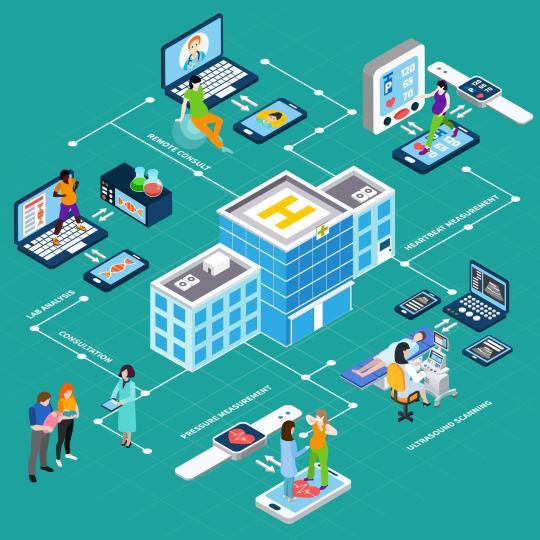
The integration of blockchain technology into the healthcare sector is revolutionizing the way medical data is managed, shared, and secured. As the demand for transparent, efficient, and secure healthcare services grows, blockchain offers promising solutions to longstanding challenges.
Understanding Blockchain in Healthcare
Blockchain Technology is a decentralized digital ledger that records transactions across multiple computers in a way that ensures the security and transparency of data. In healthcare, blockchain can be used to manage patient records, track pharmaceuticals, ensure the integrity of clinical trials, and streamline administrative processes. The immutable nature of blockchain helps in preventing data breaches, ensuring data accuracy, and enhancing patient privacy.
According to BIS Research, the Global Blockchain in Healthcare Market was estimated to grow to a value of $5.61 billion by 2025, and still the market is showing a steep growth till 2030 witnessing a double-digit CAGR growth rate throughout the forecast period.
Key Market Dynamics
Several factors are driving the growth of the global blockchain in healthcare market:
Data Security and Privacy:
Need for robust data security and privacy solutions.
Healthcare data breaches are a growing concern.
Blockchain's secure, immutable nature protects sensitive patient information.
Interoperability and Data Sharing:
Facilitates seamless data sharing between healthcare providers and systems.
Overcomes current interoperability issues.
Leads to better patient outcomes by providing a comprehensive view of health history.
Supply Chain Transparency:
Tracks the entire lifecycle of drugs in the pharmaceutical industry.
Ensures the authenticity of medications.
Helps combat counterfeit drugs.
Efficient Administrative Processes:
Streamlines various administrative processes, such as billing and claims management.
Reduces fraud and administrative costs.
Support from Regulatory Bodies:
Increasing support from regulatory bodies and governments.
Initiatives by FDA and EMA to explore blockchain for drug traceability and clinical trials boost market growth.
Request for an updated Research Report on Global Blockchain in Healthcare Market Research.
Global Blockchain in Healthcare Industry Segmentation
Segmentation by Application:
Data Exchange and Interoperability
Supply Chain Management
Claims Adjudication and Billing Management
Clinical Trials and Research
Others
Segmentation by End-User:
Healthcare Providers
Pharmaceutical Companies
Payers
Others
Segmentation by Region:
North America
Europe
Asia-Pacific
Latin America and Middle East & Africa
Future Market Prospects
The future of the global blockchain in healthcare market looks promising, with several trends likely to shape its trajectory:
Integration with AI and IoT: The integration of blockchain with artificial intelligence (AI) and the Internet of Things (IoT) will enhance data analytics, predictive healthcare, and real-time monitoring.
Expansion of Use Cases: New use cases for blockchain in digital healthcare will emerge, including patient-centered care models, personalized medicine, and enhanced telemedicine services.
Focus on Patient-Centric Solutions: Blockchain will enable more patient-centric healthcare solutions, empowering patients with greater control over their health data and enhancing patient engagement.
Development of Regulatory Frameworks: The establishment of clear regulatory frameworks and industry standards will facilitate the widespread adoption of blockchain in healthcare.
Conclusion
The Global Blockchain in Healthcare Industry is poised for significant growth, driven by the need for enhanced data security, interoperability, supply chain transparency, and efficient administrative processes. By addressing challenges related to regulatory compliance, implementation costs, standardization, and scalability, and leveraging opportunities in technological advancements, investments, partnerships, and government initiatives, the potential of blockchain in healthcare can be fully realized. This technology promises to revolutionize healthcare delivery, enhancing efficiency, transparency, and patient outcomes, and setting new standards for the future of digital health.
#Blockchain in Healthcare Market#Blockchain in Healthcare Industry#Blockchain in Healthcare Market Report#Blockchain in Healthcare Market Research#Blockchain in Healthcare Market Forecast#Blockchain in Healthcare Market Analysis#Blockchain in Healthcare Market Growth#BIS Research#Healthcare
2 notes
·
View notes
Text
Simplifying Website Design and Development: Your Ultimate Guide
Simplifying Website Design and Development: Your Ultimate Guide
In today's digital age, having a strong online presence is essential for businesses of all sizes. A well-designed and developed website not only enhances your brand image but also serves as a powerful marketing tool to attract and engage customers. In this comprehensive guide, we'll explore everything you need to know about website design and development, including services, companies, and agencies in the USA and Canada.
Understanding Website Design and Development
Website design and development encompass the process of creating and building a website from scratch or redesigning an existing one. It involves various elements such as layout design, user interface (UI) and user experience (UX) design, coding, content creation, and optimization for search engines.
Website Design and Development Services
Professional website design and development services cater to the diverse needs of businesses seeking to establish or enhance their online presence. These services typically include:
Custom Website Design: Tailored design solutions to reflect your brand identity and meet specific business objectives.
Responsive Web Development: Building websites that adapt seamlessly to different devices and screen sizes for optimal user experience.
E-commerce Development: Creating online stores with secure payment gateways, product catalogs, and shopping cart functionality.
Content Management Systems (CMS): Integration of user-friendly CMS platforms like WordPress, Joomla, or Drupal for easy website management.
Search Engine Optimization (SEO): Implementing strategies to improve website visibility and rankings on search engine results pages (SERPs).
Website Maintenance and Support: Ongoing support, updates, and maintenance services to ensure website performance and security.
Website Design and Development Companies and Agencies
In the USA and Canada, numerous companies and agencies specialize in website design and development. These firms offer expertise in creating high-quality websites tailored to clients' unique needs and preferences. Some key characteristics to look for in a reputable website design and development company or agency include:
Experience and Expertise: Choose a company with a proven track record of delivering successful projects across various industries.
Portfolio: Review their portfolio of past work to gauge the quality and diversity of their designs and developments.
Client Reviews and Testimonials: Read reviews and testimonials from previous clients to assess their satisfaction and experiences.
Communication and Collaboration: Look for a company that emphasizes clear communication and collaboration throughout the project lifecycle.
Affordability and Value: Consider companies that offer competitive pricing without compromising on quality and value-added services.
Website Design and Development Companies in the USA and Canada
In the USA, reputable website design and development companies include:
ABC Web Solutions: A leading web development firm specializing in custom website design, e-commerce solutions, and digital marketing services.
XYZ Creative Agency: Known for innovative web design, responsive development, and SEO optimization strategies tailored to clients' specific needs.
123 Digital Studio: Providing comprehensive website design and development services, including UI/UX design, CMS integration, and ongoing support.
In Canada, notable website design and development companies include:
Maple Leaf Web Design: Offering professional website design, e-commerce development, and SEO services for businesses across Canada.
Great White North Digital: Specializing in responsive web design, custom development, and online marketing solutions to help Canadian businesses thrive online.
True North Web Solutions: A full-service web agency providing creative design, robust development, and strategic digital solutions tailored to clients' goals.
Conclusion
Investing in professional website design and development is crucial for businesses looking to establish a strong online presence and attract customers. By understanding the services offered and choosing reputable companies or agencies, you can create a visually appealing, functional, and user-friendly website that drives business growth and success.
Whether you're based in the USA or Canada, there are numerous options available to help you achieve your website design and development goals. Take the time to research, compare, and select the right partner to bring your vision to life and propel your business forward in the digital landscape.
#website#webdesign#webdevelopment#website development#web developing company#web design#web developers#website optimization#website developer near me#website design
3 notes
·
View notes
Text
Unveiling the Essential Role of Full Stack Developers in Modern Web Development
Introduction:
Within the dynamic realm of web development, full stack developers stand out as indispensable assets, offering a unique blend of expertise in both frontend and backend technologies. Their versatility enables them to navigate through various aspects of web application development, from crafting user interfaces to managing databases and server-side logic.
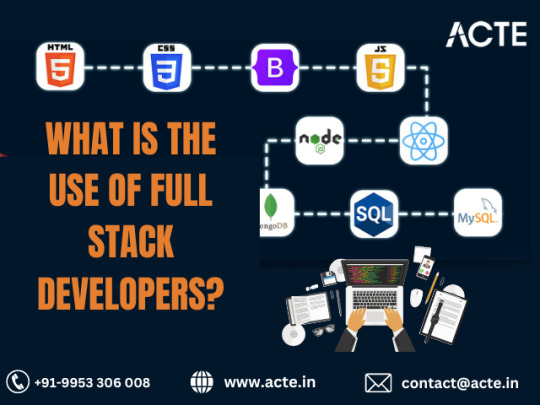
In this article, we'll delve into the essential role of full stack developers, shedding light on their pivotal contributions to streamlining development processes and fostering innovation within the industry.
1. Comprehensive Development Capabilities:
An integral aspect of full stack developers lies in their adeptness at overseeing end-to-end development projects. From initial concept to deployment, these professionals are proficient in every stage of the development lifecycle. They excel at designing intuitive user interfaces, implementing intricate frontend functionality, crafting robust backend logic, seamlessly integrating databases, and orchestrating smooth deployment of applications. This holistic approach ensures coherence and uniformity across the entirety of the project.
2. Proficient Problem Solvers:
Full stack developers possess a profound understanding of both frontend and backend technologies, equipping them with the skills to address issues at varying levels of the application stack. Their extensive skill set enables them to identify and resolve challenges efficiently, thereby minimizing downtime and ensuring the seamless operation of web applications. Whether it entails debugging frontend UI glitches or optimizing backend performance, full stack developers excel in devising effective solutions to intricate technical hurdles.
3. Collaborative Cross-Functional Engagement:
Effective collaboration is paramount in any development endeavor, and full stack developers are adept at fostering cross-functional teamwork. With their comprehensive grasp of frontend and backend technologies, they facilitate seamless communication and collaboration among designers, frontend developers, backend developers, and project managers. This cohesive teamwork ensures alignment on project objectives and facilitates smooth execution of tasks throughout the development journey.
4. Streamlined Development Processes:
The presence of a single developer proficient in both frontend and backend tasks results in a more streamlined and efficient development process. Full stack developers seamlessly transition between frontend and backend development, thereby mitigating communication gaps and reducing the need for handoffs between different team members. This streamlined approach translates into faster development cycles, rapid iterations, and ultimately, shortened time-to-market for web applications.
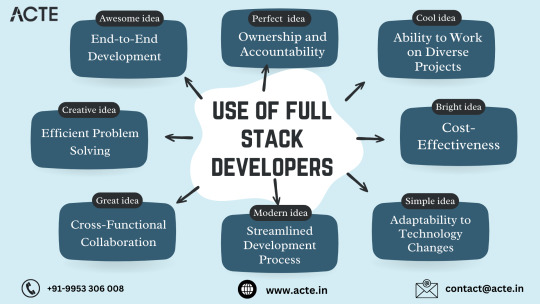
5. Adaptability to Technological Advancements:
In a landscape characterized by constant evolution, full stack developers are well-equipped to adapt to emerging trends and integrate new technologies into their projects. Their ability to stay abreast of the latest developments ensures they remain at the forefront of innovation in web development, thereby enabling them to deliver cutting-edge solutions tailored to meet the evolving needs of clients and users alike.
6. Cost-Efficiency:
Employing separate specialists for frontend and backend development can incur substantial costs for businesses. Conversely, engaging a full stack developer who can adeptly handle both roles offers a more cost-effective alternative. This approach not only reduces development expenditures but also minimizes overhead and administrative burdens associated with project management. Furthermore, having a singular point of contact for development tasks enhances communication and expedites decision-making processes.
7. Versatility in Project Execution:
Full stack developers possess the versatility to tackle a diverse array of projects, ranging from simple websites to complex web applications. This flexibility enables them to address varied challenges and contribute effectively to a wide spectrum of projects. Whether it involves crafting e-commerce platforms, content management systems, or social networking sites, full stack developers boast the expertise and adaptability to deliver bespoke solutions tailored to the unique requirements of each project.
8. Ownership and Commitment:
Often assuming ownership of the projects they undertake, full stack developers exhibit a heightened sense of accountability and dedication. This intrinsic ownership fosters a greater commitment to project success, as developers become personally invested in achieving favorable outcomes. By assuming responsibility for the entire development process, full stack developers ensure projects are delivered punctually, within budget constraints, and in adherence to the highest quality standards.
Conclusion:
In summary, full stack developers occupy a pivotal position in the realm of web development, leveraging their versatile skill sets and comprehensive understanding of frontend and backend technologies to drive innovation and excellence. By harnessing the unique capabilities of full stack developers, businesses can streamline development processes, stimulate innovation, and deliver unparalleled web experiences to their audience.
#full stack developer#education#information#full stack web development#front end development#frameworks#web development#backend#full stack developer course#technology
4 notes
·
View notes
Text
The Profound Benefits of Embracing Full Stack Development
Introduction: In the dynamic realm of software development, full stack developers have emerged as indispensable assets, equipped with the skills to navigate both front-end and back-end technologies seamlessly. This comprehensive exploration sheds light on the multifaceted advantages of embracing full stack development, unveiling the unique benefits and opportunities that accompany proficiency in both facets of the development stack.

Unlocking the Benefits of Full Stack Development:
Versatility and Adaptability: Full stack developers possess a diverse skill set, encompassing proficiency in both front-end and back-end technologies. This versatility enables them to fluidly transition between different aspects of development, adeptly adapting to project requirements and challenges.Mastery of client-side and server-side technologies empowers full stack developers to tackle a myriad of tasks, from crafting intuitive user interfaces to implementing complex business logic. This adaptability renders them invaluable assets to development teams, capable of contributing to various stages of the software development lifecycle with finesse.
Comprehensive Project Ownership: A defining advantage of full stack developers lies in their ability to assume end-to-end ownership of projects, from inception to deployment. With a comprehensive understanding of both front-end and back-end technologies, full stack developers can oversee all facets of development, ensuring seamless integration and coherence throughout the project lifecycle.This holistic perspective empowers full stack developers to make informed decisions at every juncture of development, from conceptualization and architecture to execution and optimization. By embracing responsibility for the entire project, full stack developers drive efficiency, consistency, and quality, culminating in successful project outcomes.
Expanded Employability and Career Prospects: Full stack developers are highly coveted by employers owing to their diverse skill set and capacity to work across multiple technologies. Proficiency in both front-end and back-end technologies opens the door to a plethora of career opportunities across various industries and sectors.Employers prize full stack developers for their adaptability, versatility, and ability to deliver end-to-end solutions that align with business objectives. Whether it entails developing web applications, mobile apps, or enterprise software, full stack developers are poised to excel in diverse roles and environments, making them sought-after candidates in the job market.
Efficient Collaboration and Communication: Full stack developers excel in cross-functional collaboration, proficiently communicating with designers, product managers, and fellow developers alike. Their grasp of both front-end and back-end technologies bridges the gap between different teams and departments, fostering smoother communication and collaboration.This collaborative prowess enables full stack developers to seamlessly integrate with cross-functional teams, ensuring that project requirements are comprehended, feedback is incorporated, and deliverables are met punctually and within budget constraints. By fostering a culture of collaboration and synergy, full stack developers contribute significantly to project success and organizational growth.
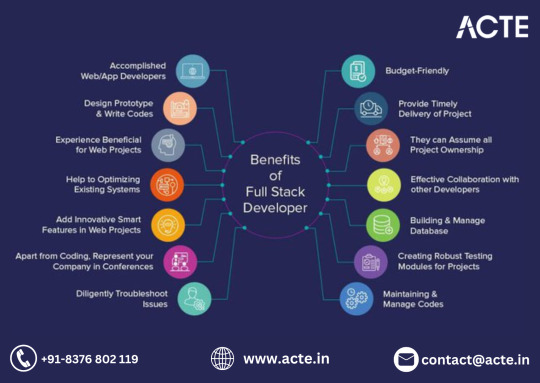
Agile Prototyping and Iteration: Full stack developers possess a knack for rapid prototyping and iteration, leveraging their comprehensive understanding of both front-end and back-end technologies. This proficiency enables them to swiftly prototype and iterate on features, accelerating development cycles and fostering innovation.By gathering feedback iteratively and swiftly incorporating user input and stakeholder feedback, full stack developers expedite the development process. This agile approach allows them to identify and address issues promptly, resulting in faster development cycles and heightened product quality.
Holistic Problem-Solving Proficiency: Full stack developers boast holistic problem-solving skills, enabling them to tackle challenges across the user interface and server layers. With an in-depth comprehension of both front-end and back-end technologies, full stack developers approach problems from diverse angles, exploring a plethora of solutions and technologies to pinpoint the most effective remedy.This comprehensive problem-solving approach fosters creativity, innovation, and critical thinking, as full stack developers explore various methodologies and techniques to resolve intricate problems. By harnessing their diverse skill set and experience, full stack developers surmount obstacles and deliver innovative solutions that cater to user needs and business imperatives.
Continuous Learning and Professional Growth: Full stack development is an ever-evolving domain that encourages continuous learning and professional growth. With new technologies, frameworks, and best practices perpetually emerging, full stack developers have ample opportunities to augment their skill set and remain abreast of industry trends.Continuous learning is inherent to the full stack developer role, necessitating a commitment to staying abreast of the latest advancements in both front-end and back-end technologies. By investing in continuous learning and professional development, full stack developers remain competitive in the job market and position themselves for sustained success in their careers.
Conclusion: In summary, embracing full stack development bestows a myriad of advantages and opportunities, ranging from versatility and end-to-end project ownership to enhanced employability and continuous learning. By mastering both front-end and back-end technologies, full stack developers are primed to excel in diverse roles and environments, driving innovation and success in the ever-evolving sphere of software development. Whether you're an established developer or an aspiring professional, embracing full stack development opens doors to a world of possibilities and professional fulfillment.
#full stack course#full stack developer#full stack software developer#full stack training#full stack web development
4 notes
·
View notes
Text
Demystifying DevOps: Harmonizing Development and Operations
DevOps Essentials: DevOps serves as a conduit for collaboration and heightened productivity between software development and IT operations teams. At its core, DevOps aims to streamline the software development lifecycle, ensuring the continuous delivery of top-tier software. Key tenets include automation, collaboration, and the implementation of continuous integration/continuous deployment (CI/CD) processes.
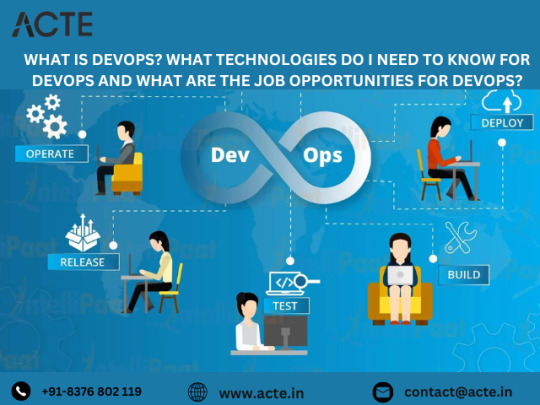
Unveiling the Core Tenets:
Collaboration: Breaking down silos to create a shared culture and responsibilities between development and operations teams.
Automation: Leveraging automated processes to eliminate manual tasks, reduce errors, and enhance efficiency.
CI/CD: Emphasizing continuous integration and deployment for swift and reliable software releases.
Diverse Career Paths in the DevOps Realm
1. DevOps Engineer: Role: Implementation and management of tools and processes for streamlined software development, testing, and deployment. Responsibilities: Collaborate across teams, optimize CI/CD pipelines, and ensure the efficiency of software delivery.
2. Site Reliability Engineer (SRE): Role: Concentration on ensuring the reliability, availability, and performance of systems through automation, monitoring, and incident response. Responsibilities: Implementation of robust monitoring solutions, automation of recovery processes, and improvement of system reliability.
3. Cloud Engineer: Role: Specialization in designing, implementing, and maintaining cloud infrastructure, often involving Infrastructure as Code (IaC) tools and cloud provider services. Responsibilities: Optimization of cloud environments, ensuring scalability, and managing infrastructure through code.
4. Automation Engineer: Role: Development of scripts and tools to automate manual processes, enhancing efficiency and minimizing human errors. Responsibilities: Identification of areas for automation, script creation, and monitoring of automated processes.
5. Release Manager: Role: Coordination of the release process, ensuring efficient and reliable software delivery with minimal disruptions. Responsibilities: Collaboration with development and operations teams, planning of release schedules, and overseeing deployment processes.
6. Security DevOps Engineer (DevSecOps): Role: Integration of security practices into the DevOps pipeline, ensuring security considerations at every stage of development and deployment. Responsibilities: Conducting security assessments, implementing security controls, and educating teams on secure coding practices.

Sustained Demand for DevOps Professionals: Unraveling the Factors
As organizations globally acknowledge the advantages of incorporating DevOps practices, the demand for skilled professionals in this field continues to surge. Several factors contribute to the perpetual demand for DevOps practitioners:
1. Efficiency Gains: DevOps practices significantly enhance efficiency by automating manual tasks, reducing errors, and accelerating software delivery. Organizations seek professionals who can optimize processes for maximum efficiency.
2. Continuous Improvement: The DevOps culture emphasizes continuous improvement. Companies value professionals who embrace a mindset of constant learning, adaptability, and a commitment to refining processes.
3. Collaboration is Key: The collaboration fostered by DevOps is invaluable. Companies are eager to bring in professionals who can bridge the gap between development and operations teams, fostering effective communication and shared goals.
4. Faster Time-to-Market: DevOps enables organizations to release software faster and more reliably. In a competitive landscape, companies strive to minimize time-to-market, making skilled DevOps professionals indispensable.
5. Scalability in the Cloud: The move towards cloud computing amplifies the need for DevOps expertise. Professionals who can navigate cloud environments, implement Infrastructure as Code, and optimize cloud infrastructure are in high demand.
A Roadmap to Success in the DevOps Journey: Navigating Practices and Transformations
1. Instill a DevOps Culture: Commence your journey by fostering a collaborative and innovative culture within your organization. Encourage open communication, shared responsibilities, and a commitment to continuous improvement.
2. Evaluate Existing Processes: Conduct a comprehensive assessment of current development and operations processes. Identify bottlenecks, communication gaps, and areas where automation can bring significant improvements.
3. Embrace the Power of Automation: Implement automation practices across the software development lifecycle. Automate build, testing, and deployment processes to enhance efficiency and reduce manual errors.
4. Establish CI/CD Pipelines: Lay the foundation for robust Continuous Integration and Continuous Deployment (CI/CD) pipelines. Ensure that code changes are seamlessly integrated, rigorously tested, and deployed consistently.
5. Dive into Containerization: Introduce containerization using tools like Docker. Containers ensure consistency across different environments and facilitate scalable and efficient deployment of applications.
6. Embrace Cloud Infrastructure: Contemplate the migration to cloud infrastructure to leverage scalability and flexibility. Familiarize yourself with leading cloud platforms and delve into Infrastructure as Code (IaC) tools.
7. Continuous Monitoring and Feedback Loops: Implement continuous monitoring practices to track the performance of applications and infrastructure. Establish feedback loops for swift issue detection and resolution.
8. Cultivate a Learning Culture: Encourage teams to actively engage in continuous learning. Stay updated on industry trends, participate in training programs, and foster a culture where learning is valued.
9. Cultivate a Robust Skill Set: DevOps professionals should develop a diverse skill set, encompassing automation tools, cloud technologies, security practices, and collaboration techniques.
10. Embrace Adaptability and Innovation: DevOps is a journey of constant evolution. Stay adaptable, experiment with new tools and methodologies, and innovate to meet the evolving needs of your organization.
Thriving in the DevOps Ecosystem: Conclusion
In conclusion, DevOps transcends being merely a set of practices; it's a cultural transformation that empowers organizations to deliver software efficiently and reliably. The diverse job opportunities within the DevOps landscape cater to professionals with skills ranging from automation and cloud engineering to security and collaboration.
Embark on your DevOps journey with the understanding that it's a continuous evolution. Stay curious, stay adaptable, and let your commitment to efficiency and collaboration guide you through the dynamic and rewarding world of DevOps. Best of luck on your path to unlocking the power of DevOps!
2 notes
·
View notes
Text
Disruptive Innovation Keynote Speaker Jeremy Gutsche on Trends & Change
" Top Innovation Keynote Speaker Jeremy Gutsche's speech on trends, change, creativity and disruptive innovation. In this disruptive innovation keynote speech, Jeremy (...) walks though how disruptive innovation happens, how to create a culture of innovation & change and the Trend Hunter's top 18 futurist mega trends impacting our world. "Disrupt or be Disrupted" is his latest and best speech on disruptive innovation and creativity and was presented at Trend Hunter's epic Future Festival Trends Innovation Conference (where it was titled "How to Spark a Revolution")
As a New York Times Bestseller, CEO of Trend Hunter and one of the top innovation keynote speakers, Jeremy has helped 500 brands, billionaires to implement disruptive innovation strategies in order to avoid being disrupted themselves. The Disruptive Innovation Keynote Speech is structured in five parts, based off several of Jeremy's latest keynote speaker topics:
i. INTRO - MOTIVATIONAL SPEECH ON INNOVATION - Ignite your enthusiasm for change with Jeremy's high energy keynote speaker style as he introduces the reason for studying disruptive innovation and trends.
ii. KEYNOTE SPEECH ON CHANGE & DISRUPTION - Learn why disruptive innovation happens, and the need for companies to adapt their business models sooner in Jeremy's thesis. This part of his innovation speech is based on research from his New York Times Bestseller "BETTER and FASTER" which is currently the top innovation keynote video on youtube with 6,000,000 views.
iii. KEYNOTE SPEECH ON PURPOSE - Learn how to create a culture of innovation with a 3-part culture framework from Jeremy's innovation speech on culture. This part is a bit more tactical, but to disrupt, innovate or make change happen, you need a culture of innovation and change.
iv. KEYNOTE SPEECH ON TRENDS & TREND-BASED INNOVATION - Modeled off Trend Hunter's big data from 130,000,000 people, this part of the disruptive innovation keynote speech gets deeper into the futurist mega trends that are shaping our world, and how your business can adapt to leverage trends. Disruptive innovation starts with creative ideas that are linked to the trends that are changing business.
v. KEYNOTE SPEECH ABOUT INNOVATION AND ACTION - Finally, Jeremy wraps up with a couple examples from his strategy keynote about action and how innovation often stems from little ideas that you can make big. People think about disruption as something linked to big Eureka moments, but actually disruptive innovation is more frequently linked to little iterations, change, and adaptation that can be more broadly implemented into a company's business strategy and organizational culture.
"Disrupt or be Disrupted" is a TED Talks style speech on innovation is designed to inspire you, and if you want more, but if you want more, come to Future Festival where you can spend more time exploring the top 18 Disruption Megatrends AND take part in Trend Hunter's innovation workshops to identify disruptive innovation opportunities for your own brand. "
Source: Trend Hunter - 2017
#mktmarketing4you#corporatestrategy#marketing#M4Y#lovemarketing#IPAM#ipammarketingschool#ContingencyPlanning#virtual#volunteering#project#Management#Economy#ConsumptionBehavior#BrandManagement#ProductManagement#Logistics#Lifecycle
#Brand#Neuromarketing#McKinseyMatrix#Viralmarketing#Facebook#Marketingmetrics#icebergmodel#EdgarScheinsCultureModel#GuerrillaMarketing#STARMethod#7SFramework#gapanalysis #AIDAModel #SixLeadershipStyles #MintoPyramidPrinciple #StrategyDiamond #InternalRateofReturn #irr #BrandManagement #dripmodel #HoshinPlanning #XMatrix #backtobasics #BalancedScorecard #Product #ProductManagement #Logistics #Branding #freemium #businessmodel #business #4P #3C #BCG #SWOT #TOWS #EisenhowerMatrix #Study #marketingresearch #marketer #marketing manager #Painpoints #Pestel #ValueChain # VRIO #marketingmix
youtube
5 notes
·
View notes
Text
From Data to Dollars - Navigating the Marketing Landscape with Our Agency
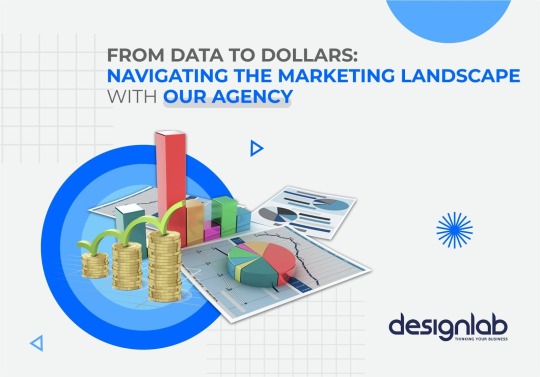
In today's hyper-competitive business landscape, marketing has evolved into a data-driven science more than ever. Every digital footprint, every click, every social media interaction generates a wealth of information that savvy marketers can use to drive results. As a leading marketing agency, we understand the transformative power of data, and we are here to guide you in the journey from data to dollars.
Data Revolution in Marketing
Marketing used to rely heavily on intuition and creativity. While these elements still play an important role, they are now based on a deeper understanding of the data. The digital age has ushered in an abundance of information that can be used to create highly targeted and effective marketing campaigns.
Rise of Big Data
Big data has become the backbone of modern marketing. The term refers to the vast amounts of structured and unstructured data generated every day. This includes customer interactions on websites, social media posts, emails, and more. Using this data can provide valuable insights into customer behaviour and preferences.
Marketing Automation
Marketing automation tools have made it easier than ever to collect, analyze, and act on data. These tools enable businesses to streamline their marketing efforts, sending personalized messages to the right audience at the right time.
Personalization and Customer Journey Mapping
Data allows marketers to create highly personalized experiences for customers. By understanding the customer journey, from awareness to conversion, marketers can optimize their messaging and content at each stage, increasing the likelihood of conversion.
Our Data-Driven Approach
At our agency, data is at the core of everything we do. We have developed a comprehensive approach that takes clients from data analysis to actionable insights and ultimately to increased revenue.
Data Collection
The first step in our process is data collection. We work with our clients to identify all available data sources, from website analytics to CRM systems. We ensure that data is collected in a structured and systematic manner to facilitate analysis.
Data Analysis
Once the data is collected, our team of data analysts gets to work. We use advanced analytics techniques to uncover hidden insights like customer segmentation, purchasing patterns and conversion funnels.
Strategy Development
With a deep understanding of data, we develop data-driven marketing strategies tailored to each client's goals. This strategy involves specific tactics and campaigns designed to drive results.
Execution
Once the strategy is created, our marketing team executes the campaigns. We use marketing automation tools to deliver personalized messages to the right audience at the right time. Our team constantly monitors and adjusts campaigns to ensure they are delivering the desired results.
Measurement and Optimization
The data doesn't stop at the implementation stage. We continue to collect and analyze data throughout the campaign lifecycle. This allows us to make adjustments in real-time to optimize performance and maximize ROI.
Case Study: How Data Driven Dollars
To illustrate the power of our data-driven approach, let's take a look at a real-world case study.
Customer Background
Our client, a medium-sized e-commerce retailer, was struggling to compete in a crowded marketplace. They had a loyal customer base but were looking to expand their reach and increase revenue.
Data Analysis
We started by analyzing existing customer data. This included website traffic, customer purchase history, and email marketing performance. Our analysis revealed several key insights:
Customer Segmentation: We identified different customer segments based on their purchasing behaviour and demographics.
Abandoned Carts: We discovered a high rate of abandoned shopping carts on the website.
Email Engagement: We found that some email campaigns were performing better than others in terms of click-through and conversion rates.
Strategy Development
Armed with these insights, we developed a data-driven strategy:
Customer Segmentation: We created highly targeted email campaigns for each customer segment, tailoring product recommendations and messages to their preferences.
Cart Recovery: We've implemented an automated cart recovery email series to remind customers of their abandoned carts and encourage them to complete their purchase.
Email Optimization: We optimized email content and timing based on our data analysis, increasing engagement and conversion rates.
Execution
We executed the strategy for several months, continuously monitoring performance and making adjustments based on real-time data.
Result
The results were impressive:
Revenue Growth: The client saw a 30% increase in revenue during the campaign.
Cart Recovery: The cart recovery email series led to a 20% reduction in abandoned carts and a 15% increase in cart conversions.
Email Engagement: Email engagement rates improved by 25%, which increased conversion rates.
This case study explains how data can be leveraged to achieve tangible results. By understanding customer behaviour and tailoring marketing efforts accordingly, our agency was able to convert data into dollars for our client.
Importance of Data Privacy
Although data is a powerful tool in marketing, it must be handled responsibly. Data privacy is an important issue, with consumers concerned about how their data is collected and used.
Compliance With Regulations
Our agency takes data privacy seriously and ensures compliance with all relevant regulations such as GDPR and CCPA. We work closely with our customers to establish transparent data collection and use policies.
Ethical Data Use
Ethical data use is not just a legal requirement; It is also a moral imperative. We are committed to using data in ways that respect the privacy and rights of individuals.
Transparency With Customers
We believe in transparency with customers regarding data collection and use. Building trust is essential in today's digital age, and being open about data practices is an important step in that direction.
The Future of Data-Driven Marketing
The world of data-driven marketing is constantly evolving. As technology advances and consumer behaviour changes, marketers must adapt and innovate to stay ahead. Here are some of the key trends shaping the future of data-driven marketing:
Artificial Intelligence and Machine Learning
AI and machine learning are revolutionizing marketing. These technologies can analyze large amounts of data in real time, making more accurate predictions and personalized marketing efforts possible.
Predictive Analytics
Predictive analytics uses historical data to predict future trends and behaviours. This allows marketers to be proactive rather than reactive and adapt their strategies based on predictive insights.
Customer Experience
Customer experience is becoming the central focus of data-driven marketing. By understanding every touchpoint in the customer journey, marketers can create seamless and personalized experiences that drive loyalty and revenue.
Privacy-First Marketing
As concerns about data privacy grow, marketers will need to adopt a privacy-first approach. This means giving consumers more control over their data and being transparent about how it is used.
Integration of Offline and Online Data
The lines between offline and online data are blurring. Marketers will need to integrate data from both sources to create a holistic view of the customer.
Conclusion
In today's marketing landscape, data is the currency that drives success. From understanding customer behaviour to optimizing campaigns in real-time, data is at the heart of everything we do at our agency. We've seen firsthand how data can be turned into dollars, and we're committed to helping our clients navigate the data-driven marketing landscape to achieve their goals. If you're ready to harness the power of data and take your marketing efforts to the next level, contact us today. Together, we will turn data into dollars and propel your business into the digital age.
2 notes
·
View notes
Text
Achieving Cost Savings through Supplier Collaboration in Siemens Teamcenter PLM Software
In the dynamic landscape of modern business, collaboration is the cornerstone of success. This holds true not only within an organization but also across the entire supply chain. Suppliers play a pivotal role in the journey from concept to creation, and their collaboration can yield significant cost savings and operational efficiencies. Teamcenter PLM's supplier collaboration features are transforming the way organizations interact with suppliers, leading to negotiated cost savings, improved procurement processes, and enhanced cost control. In this article, we delve into how Teamcenter PLM is fostering this collaborative spirit, backed by real-world examples.

A New Paradigm in Supplier Collaboration
Gone are the days of transactional relationships between organizations and suppliers. The modern approach is based on collaboration, where suppliers are viewed as strategic partners integral to the success of a project. Siemens PLM Software, with its comprehensive suite of supplier collaboration tools, empowers organizations to seamlessly integrate suppliers into their product development processes.
Negotiated Cost Savings: A Win-Win Scenario
Supplier collaboration in Teamcenter PLM opens the door to negotiated cost savings. When suppliers are brought into the design phase, they can offer valuable insights into cost-effective materials, manufacturing processes, and alternative components. By tapping into their expertise, organizations can optimize designs for cost efficiency without compromising on quality. For instance, a manufacturer collaborating with a supplier might identify a more cost-effective yet equally durable material for a component, resulting in substantial cost savings over the product's lifecycle.
Improved Procurement Processes: Streamlining Efficiency
Procurement is a critical component of the supply chain, and any inefficiencies can lead to increased costs. Teamcenter PLM's Cost Management Software supplier collaboration features streamline procurement processes by providing real-time visibility into supplier capabilities, capacities, and lead times. This enables organizations to make informed decisions about sourcing, reducing the risk of delays and costly last-minute changes. For instance, a company collaborating with a supplier can receive updates on raw material availability, helping them plan their production schedule and avoid costly supply shortages.
Enhanced Cost Control: Data-Driven Insights
Effective cost control requires accurate and up-to-date information. Teamcenter PLM's supplier collaboration features enable organizations to access real-time cost data from suppliers. This transparency empowers procurement teams to make strategic decisions based on actual costs rather than estimates. Furthermore, collaboration with suppliers can help organizations identify cost drivers and areas where cost reductions can be implemented. For instance, a company working closely with a supplier might discover opportunities to consolidate shipments, reducing transportation costs.
Real-World Examples of Success
Real-world examples illustrate the power of supplier collaboration in achieving cost savings. Consider a consumer electronics company partnering with a supplier to design a new smartphone. By collaborating closely, they identify a more cost-effective battery design that doesn't compromise on performance. This leads to reduced manufacturing costs and a competitive edge in the market.
In the automotive industry, a car manufacturer collaborates with a supplier of advanced materials. Together, they explore innovative materials that are not only lightweight but also cost-efficient. This collaboration results in cost savings due to reduced material consumption and improved fuel efficiency in the final product.
Conclusion: Empowering Future Success
Supplier collaboration through Teamcenter PLM software transcends traditional boundaries. It's a strategy that fosters innovation, efficiency, and cost savings. By involving suppliers early in the product development process, organizations can tap into their expertise, optimize designs, and make informed decisions that positively impact the bottom line. As the business landscape continues to evolve, organizations that embrace supplier collaboration are not only achieving cost savings but also laying the foundation for future success and growth.
For Free PLM Software trial, download Siemens Teamcenter PLM software trial!
#plmsoftware#costmanagementsoftware#what is plm software#plm software#siemens plm software#cost reduction software#free plm software
2 notes
·
View notes
Text
Unlocking Agile Development: The DevOps Advantage
In today's rapidly evolving tech landscape, staying ahead of the competition requires more than just developing code—it requires an agile approach to development. Agile methodologies have transformed the way software is built and delivered, emphasizing collaboration, flexibility, and continuous improvement. But what if there was a way to further enhance the agility of your development process? Enter DevOps—the ultimate catalyst for unleashing the true potential of agile development.

The Synergy of Agile and DevOps: A Perfect Match
Agile development focuses on iterative development, frequent feedback, and close collaboration between cross-functional teams. DevOps, on the other hand, goes beyond development to encompass the entire software delivery pipeline, including testing, integration, deployment, and monitoring. The integration of these two powerful methodologies creates a synergy that turbocharges development cycles and drives innovation.
Fostering Collaboration and Communication
At the heart of both agile and DevOps lies a shared value—collaboration. DevOps breaks down traditional silos between development and operations teams, fostering open communication and shared responsibilities. This alignment ensures that developers, testers, and operations work seamlessly together, leading to a faster and more reliable development process.
Continuous Delivery: The Engine of Innovation
Continuous Delivery (CD) is a cornerstone of DevOps, allowing code changes to be automatically built, tested, and deployed to production environments. This not only reduces the time and effort required for manual testing and deployment but also ensures that your application is always in a releasable state. As a result, development teams can focus on what they do best—innovating and creating—rather than getting bogged down in deployment complexities.
Accelerated Feedback Loops for Quality Enhancement
Agile development thrives on quick feedback loops, and DevOps extends this principle to the entire development lifecycle. With continuous integration and automated testing in DevOps, developers receive immediate feedback on the quality of their code. This enables rapid identification and resolution of issues, resulting in higher-quality software that's ready for deployment at any moment.
Enhanced Flexibility and Adaptability
Agile emphasizes adaptability to changing requirements, and DevOps amplifies this agility by making deployments less risky and more frequent. As a result, teams can respond to market demands and user feedback faster than ever before. Whether it's adding new features, fixing bugs, or addressing security vulnerabilities, DevOps ensures that your software remains responsive and relevant.
The Path Forward: Embracing DevOps for Agile Excellence
To unlock the true potential of agile development, it's essential to embrace DevOps practices. Start by fostering a culture of collaboration, where teams work harmoniously towards shared goals. Invest in automation tools that streamline the deployment process, allowing for faster and error-free releases. Implement continuous integration, automated testing, and continuous monitoring to ensure the quality and reliability of your applications.

Conclusion
While agile development provides the foundation for rapid software delivery, DevOps supercharges this foundation with enhanced collaboration, continuous delivery, and faster innovation. The result is a dynamic development environment that empowers teams to meet customer expectations, adapt to market changes, and drive business success. By integrating DevOps practices into your agile framework, you can truly unlock the DevOps advantage and revolutionize the way you develop, deliver, and excel in the world of software development.
Yes we do provide full courses related to DevOps.
So accelerate your career with our Courses.
Courses USP -
80+ hours of trainning
100% placement asssitance
Hiring Partners.
For more info log in to - https://www.logipool.org/
#devops#devopscourses#devopscoursesinpune#coding#devopsonlinecourses#devopsplacemnts#jobsafterdevops#salaryafterdevops
2 notes
·
View notes
Text
Master the Recipe for Success: DevOps Training to Fuel Innovation and Growth
In today's technology-driven world, businesses across industries are constantly striving to enhance their operations and stay ahead of the competition. Successful companies understand that innovation and growth go hand in hand, and one key ingredient in this recipe for success is DevOps training. By investing in DevOps education and information technology (IT), organizations can equip their teams with the necessary skills and knowledge to streamline development processes, promote collaboration, and drive efficiency. This article explores the significance of DevOps training and how it can fuel innovation and growth within an organization.
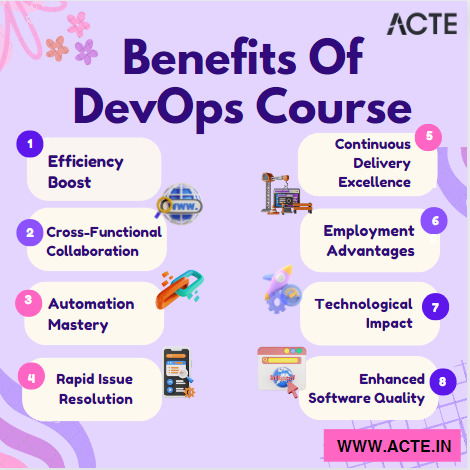
The Advantages of DevOps Training
DevOps training offers numerous benefits to organizations seeking to optimize their development lifecycle and foster a culture of innovation. Here are some advantages associated with investing in DevOps education:
Enhanced Collaboration: DevOps training promotes a collaborative mindset by breaking down silos between development and operations teams. Through cross-functional training, individuals gain a deeper understanding of each other's roles, fostering communication and cooperation.
Streamlined Development Processes: With a strong DevOps foundation, businesses can streamline their development processes by implementing automation, continuous integration, and continuous delivery (CI/CD) practices. These streamlined processes reduce bottlenecks, minimize errors, and accelerate time-to-market.
Improved Efficiency and Productivity: By equipping employees with the necessary skills to effectively utilize DevOps tools and techniques, organizations can dramatically enhance efficiency and productivity. Training empowers team members to leverage automation tools, optimize workflows, and reduce manual effort.
Better Quality and Reliability: Through DevOps education, individuals gain expertise in implementing robust testing practices and quality assurance techniques. This results in improved software reliability, minimal downtime, and enhanced customer satisfaction.
Exploring DevOps Training Options
When considering DevOps training, organizations have a range of options to choose from. These options cater to diverse learning preferences and can be tailored to meet specific business needs. Here are some popular DevOps training choices:
1. Instructor-Led Training
Instructor-led training programs offer a structured approach to learning, combining theoretical concepts with hands-on exercises. Students benefit from real-time interaction with experienced instructors and fellow learners, fostering a deeper understanding of DevOps principles and best practices.
2. Online Courses
Online courses provide flexibility and convenience for individuals seeking to acquire DevOps skills at their own pace. These courses often consist of pre-recorded videos, interactive quizzes, and comprehensive learning materials. Students can access the content anytime, anywhere, making it ideal for busy professionals.
3. Certifications
Obtaining a recognized DevOps certification can be a valuable asset for career advancement and professional growth. Certifications validate an individual's expertise in DevOps methodologies and tools, instilling confidence in employers and clients alike. Several reputable organizations offer DevOps certifications, such as the DevOps Institute and Amazon Web Services.
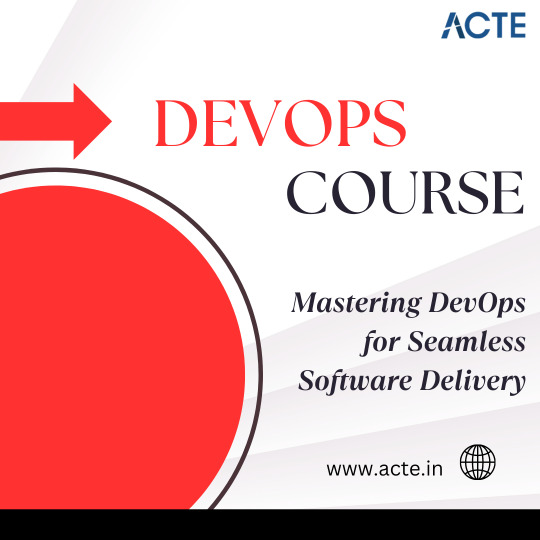
The Role of IT in DevOps Training
Information technology plays a pivotal role in enabling successful DevOps training initiatives. IT teams act as facilitators, providing the necessary infrastructure, tools, and resources to support training efforts. Here are essential aspects of IT's involvement:
Provision of Training Environments: IT departments ensure the availability of training environments, such as virtual machines or cloud-based labs, where learners can practice deploying software, configuring systems, and working with various DevOps tools.
Management of Training Platforms: IT teams oversee and maintain the learning platforms used for delivering DevOps training. This involves ensuring proper access control, monitoring system performance, and troubleshooting any technical issues that may arise.
Support for Tool Adoption: IT professionals assist in the adoption and integration of DevOps tools into existing systems. This includes providing guidance on tool selection, configuration, and customization to align with an organization's unique requirements.
Security and Compliance Considerations: IT personnel play a crucial role in ensuring that all training activities align with security policies and compliance regulations. They implement measures to protect sensitive data, secure communication channels, and maintain the integrity of training environments.
DevOps training serves as a catalyst for innovation and growth within organizations by fostering collaboration, streamlining development processes, improving efficiency, and promoting quality. By investing in ACTE institute DevOps training options, businesses can equip their teams with the knowledge and skills needed to adapt and thrive in an ever-evolving digital landscape. With the crucial support of information technology, organizations can maximize the potential of DevOps training and embark on a path towards sustained success.
9 notes
·
View notes
Text
7 Most Important Things to Look While Choosing ERP for Engineering Companies
In today's fast-paced business landscape, engineering companies rely on robust Enterprise Resource Planning (ERP) systems to streamline operations, enhance efficiency, and achieve competitive advantages. Shanti Technologies, a leading ERP software manufacturing company in India, understands the unique needs of engineering companies and offers comprehensive solutions tailored to their requirements. When selecting an ERP system, engineering companies should consider the following seven crucial factors to ensure seamless integration, scalability, functionality, and security.

I. Scalability and Customization:
Shanti Technologies recognizes the importance of scalability and customization for engineering companies. Their ERP solutions are designed to accommodate a company's growth trajectory while providing flexibility to adapt to specific industry needs. Whether your company expands its operations or diversifies into new markets, (STERP) Shanti Technologies' ERP system can seamlessly scale up to meet your evolving requirements.
II. Integration Capabilities:
Efficient integration of ERP systems with existing software and systems is vital for engineering companies. (STERP) Shanti Technologies' ERP software boasts seamless integration capabilities, allowing for smooth data exchange across departments. It ensures compatibility with engineering-specific tools such as Computer-Aided Design (CAD) software, Product Lifecycle Management (PLM) systems, and Manufacturing Execution Systems (MES), optimizing your workflow and enhancing productivity.
III. Functionality and Features:
Shanti Technologies offers a comprehensive suite of modules specifically designed for engineering processes. From project management and resource allocation to supply chain management and quality control, their ERP (Enterprise Resource Planning) system covers all crucial aspects of engineering operations. Additionally, their specialized features cater to the unique requirements of the engineering industry, facilitating efficient collaboration, documentation, and analysis.
IV. Data Security and Compliance:
Data security is a paramount concern for engineering companies, as they handle sensitive and proprietary information. Shanti Technologies prioritizes data security by implementing robust measures, such as encryption protocols, role-based access controls, and regular data backups. Their ERP system ensures compliance with industry regulations and standards, safeguarding your valuable intellectual property and confidential data.
V. User-Friendliness and Training:
Shanti Technologies understands that user-friendliness is key to successful ERP implementation. Their ERP software features an intuitive user interface, making it easy for employees to navigate and adapt quickly. Additionally, Shanti Technologies (STERP) provides comprehensive training resources to ensure a smooth transition and maximize user adoption. Their dedicated support team is always ready to address any queries or concerns.
VI. Vendor Reputation and Support:
When choosing an ERP system, it is crucial to consider the reputation and support offered by the vendor. Shanti Technologies, with its extensive experience and successful track record, has earned the trust of numerous engineering companies. They have a proven history of delivering reliable ERP solutions and providing excellent customer support. Their commitment to customer satisfaction ensures that you receive ongoing technical assistance and updates to keep your ERP system optimized.
VII. Cost and Return on Investment:
Shanti Technologies recognizes that cost is a significant consideration for engineering companies. Their ERP software provides a compelling return on investment by streamlining operations, minimizing manual processes, reducing errors, and improving overall productivity. Shanti Technologies (STERP) offers transparent pricing models, taking into account licensing, implementation, and ongoing maintenance costs. Their cost-effective solutions ensure that you receive maximum value for your investment.

Conclusion:
Selecting the right ERP system for your engineering company is a critical decision that can significantly impact your operational efficiency and success. Shanti Technologies, a trusted ERP software manufacturing company in India, understands the unique requirements of engineering companies and offers tailored solutions that encompass scalability, customization, integration capabilities, functionality, data security, user-friendliness, vendor support, and cost-effectiveness. By partnering with Shanti Technologies, you can leverage their expertise to transform your business processes, achieve operational excellence, and stay ahead in today's competitive engineering landscape. Choose Shanti Technologies for a comprehensive ERP solution that empowers your engineering company to thrive in the digital age.
#ERP software Companies in India#ERP software providers in India#ERP for manufacturing company in India#ERP software in India#ERP software company in India#ERP software solutions#marketing#ERP software#technology#ERP system#cloud ERP#ERP software for engineering
6 notes
·
View notes